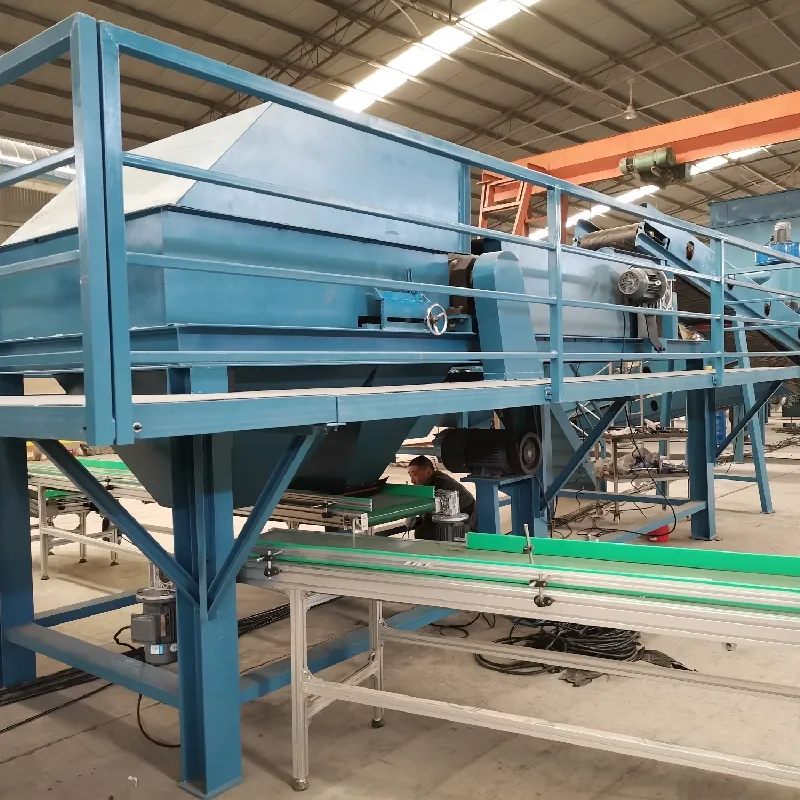The decision to invest in a steel recycling plant is a significant one, not just because of the environmental benefits but also due to the complex financial implications involved. Understanding the cost dynamics of setting up such a facility is crucial for investors and stakeholders alike. This article delves into the intricate details of steel recycling plant costs, emphasizing practical experience, professional insights, authoritative references, and reliable data to ensure a comprehensive understanding.

The foundation of any cost analysis begins with the site selection and initial construction. One of the primary expenses involved in setting up a steel recycling plant is the cost of land acquisition and site preparation. Urban locations may offer the advantage of proximity to raw material sources and markets but often come with a steep price tag due to high real estate costs. Conversely, rural sites might be more affordable but could incur additional transportation costs.
The construction phase includes erecting plant buildings, installing heavy-duty processing equipment such as shredders, magnets, and conveyor systems, and integrating energy systems. From personal expertise gained through years in the industry, equipment investment can range from hundreds of thousands to several million dollars, depending on the plant’s capacity and technological sophistication. Cutting-edge technology can enhance efficiency, reduce waste, and ultimately save money in the long run, elucidating the importance of balancing upfront expenses with future benefits.

Another significant consideration is the cost of regulatory compliance and environmental assessments. With steel recycling plants subject to stringent environmental regulations, it is imperative to invest in state-of-the-art filtration and emission control systems. These investments not only ensure compliance but also build trust with local communities and government bodies. Trustworthiness in operations can often lead to smoother regulatory processes and even financial incentives from government bodies.
An often-overlooked aspect is the operational cost, which involves labor, maintenance, energy consumption, and transportation. Employing skilled labor is crucial as the efficiency and safety of the plant heavily depend on experienced personnel. Therefore, investing in continuous training and safety programs is essential. Additionally, leveraging renewable energy sources or improving energy efficiency measures can significantly reduce operational costs, aligning with global sustainability trends.
Insurance and liability costs are an integral part of the overall financial structure of a steel recycling plant. As someone who has advised multiple industry peers, I recommend comprehensive insurance coverage to protect against potential operational risks, accidents, and environmental liabilities. This not only secures financial investments but also enhances the plant's credibility among stakeholders, including investors, partners, and the public.
steel recycling plant cost
Depreciation and tax implications are also factors that influence the long-term cost structure. Employing tax experts with experience in industrial setups can reveal various deductions and credits available to recycling plants, optimizing the financial health of the business. Understanding the nuances of depreciation can also assist in budgeting for future equipment upgrades or expansions.
A move towards digitalization and the adoption of Industry 4.
0 technologies is becoming inevitable in modern steel recycling plants. Automation, predictive maintenance, and real-time data analytics can significantly cut down costs and improve operational efficiency. Investing in such technologies may incur additional costs initially; however, the long-term savings and operational insights gained are invaluable.
Finally, no discussion of cost would be complete without considering market volatility and economic factors. Fluctuations in steel prices and demand can profoundly impact profitability. Therefore, creating flexible financial strategies that accommodate market changes is advisable.
A pragmatic approach involves developing robust partnerships across the supply chain. Collaborations with waste providers, logistics suppliers, and even end-users can stabilize raw material inflow and streamline operations. Building authoritative networks within the industry adds to the plant’s resilience against market uncertainties.
In conclusion, the cost of setting up and operating a steel recycling plant is multifaceted, involving considerable investments in infrastructure, technology, workforce, and compliance. By drawing on professional insights and authoritative data, stakeholders can better navigate these complexities. Ensuring a balance between immediate costs and long-term benefits fosters a sustainable business model, aligning profitability with ecological stewardship.


